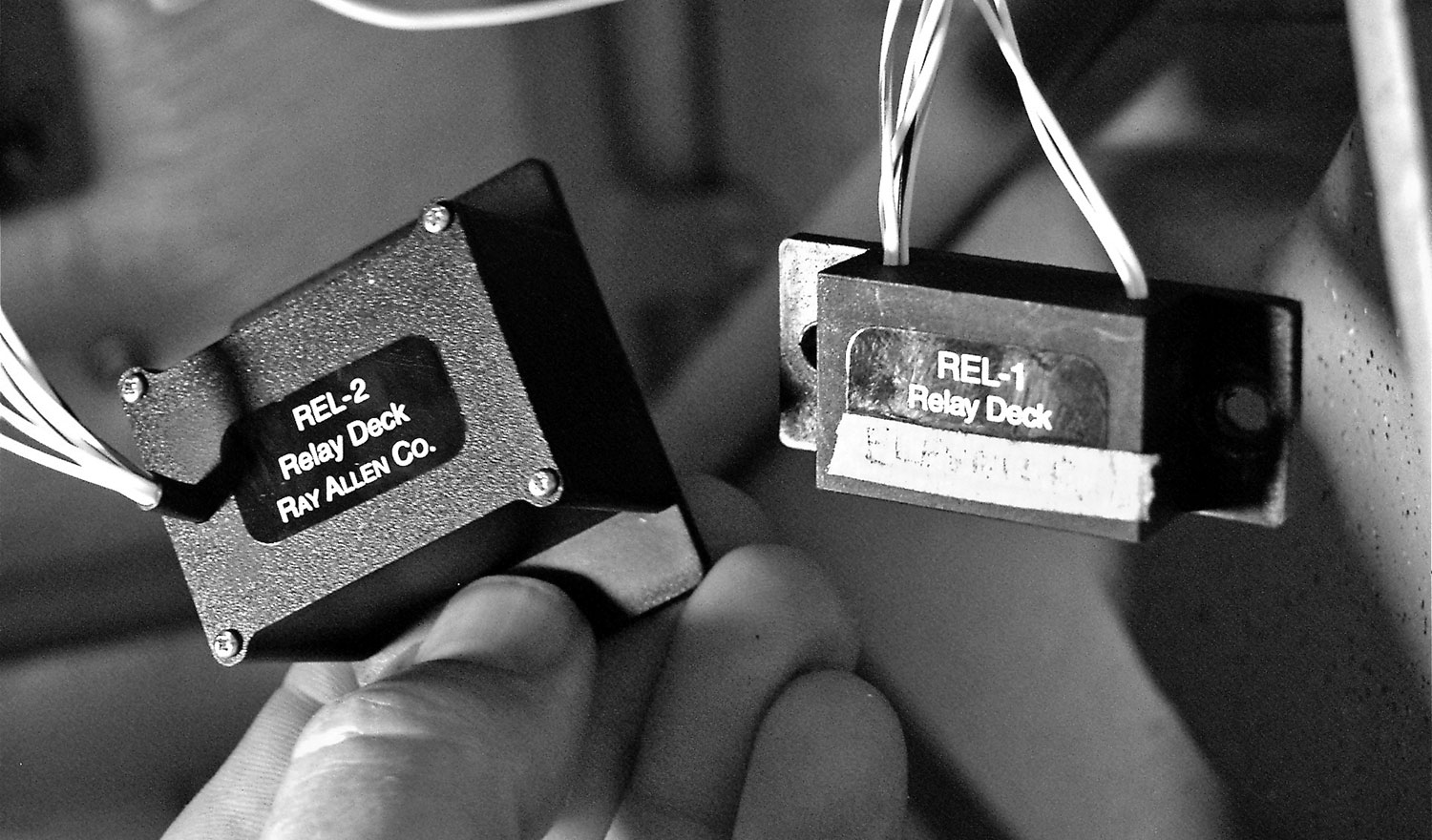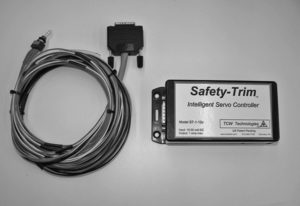Until recently, I had been having problems with the electric pitch trim system in my Sportsman. It’s the standard electric setup using the Ray Allen Co. T2-7A, to be specific. This was more or less standard fitment during the early Two Weeks To Taxi program, even though my airplane was ahead of that program by a few months.
I had chosen the usual pitch- and roll-trim switches on the sticks, so in went the normal REL-1 relay decks from Ray Allen. Hundreds of GlaStars and Sportsman aircraft have these installed, and, until recently, I hadn’t heard much bad about them.
Then, in the weeks just after the annual condition inspection, the trim system began exhibiting a dead spot. It would trim nose-down from the takeoff setting to cruise, but, over time, began failing to trim in the nose-up direction. Through experimenting, I discovered that if I trimmed more nose-down, I could get the servo to trim nose-up again. But, as it got worse, it took more movement in the opposite direction before the servo would move the way I wanted it to.
Those of you ahead of me in the learning curve are nodding right now: Yep, that’s how it starts. And you already know the solution: Replace the dang relay deck.
But why?
For the benefit of those still in the building stage, the theoretical maximum current use by the servo, when the motor is stalled, is 600 mA. The nominal current use is just 150 mA. In theory, the REL-1 deck was supposed to carry more than 1 amp. But, it turns out that it doesn’t always carry the load gracefully. When I talked to Ray Allen, the company rep said it would get the relays in for inspection and the “contacts would be dust.” Now it made sense: If the contacts are shot, once the current rose above a certain level, the connection was partially lost and the voltage dropped to where the motor would not run.

Again: You guys with flying GlaStars are nodding in unison. Been there, changed that.
Fortunately, the current solution, if you’ll pardon the pun, is a new relay, called the REL-2. Ray Allen says the new deck is good for 10 amps, which at the nominal current load of the T2-7A servo, ought to last a lifetime. The old REL-1 deck isn’t even on the company’s web site any more.
An hour or so fumbling under the panel and the new relay was in. (Sorry to say its mounting flange is narrower than the old one, so it’s not a screw-out, screw-in mechanical replacement.) If you’re building now, stop and get the new relay: Save yourself the grief of having the small one die and having to replace it in the field. There’s nothing less fun than making a component change away from home when 26-gauge wires are involved.
A synopsis of this problem was published on the KITPLANES news blog and soon after, I heard from Bob Newman at TCW Technologies, the company he founded to produce the Safety-Trim device, among other projects.

A fellow GlaStar flyer, Newman said now that I’d experienced a full-fledged relay deck failure, I could appreciate—as he did—a better solution.
It wasn’t long before I had replaced both the new REL-2 relay deck for pitch and the old REL-1 relay deck for roll in my Sportsman with the Safety-Trim. Installation was actually quite easy. The S-T uses a 15-pin d-sub connector, and working the airframe wires into this connector was far easier than splicing/soldering them to the 26-gauge wires on the old decks. Fortunately, the prototype electrical harness had enough service loop that I could mount the box, which is about 5 inches (long) by 3 inches (wide) by 2 inches (tall), under a small shelf I’d built to place the GPS and XM antennas under the glareshield in the center of the panel. The supplied harness is very nicely done, but as I had all the wires ready to go, I simply crimped new d-sub pins onto the existing aircraft harness.
For the most part, the Safety-Trim just splices into the existing system, but you’re also expected to run a set of three wires to a switch that controls main power and also makes possible a clever safety feature of the module. The switch is labeled Off, On, and Reverse. Two of those are obvious, but the Reverse position is very clever.
Let’s assume you have a stick trim switch fail in a certain direction, say as you’re adding nose-down trim. With the normal relays, the trim would run until it hit the internal limits. If the switch were mechanically or electrically stuck, there’s not much you could do but grab for the trim system switch/breaker and shut it down before it ran the trim all the way. You might get there in time, might not.
For starters, this can’t happen with the Safety-Trim. It’s designed to run for three seconds in one direction, then stop. If you need more than three seconds’ of trim movement, you have to relax the button and start again. This feature keeps a trim runaway fairly benign. When you realize the problem, place the external switch to Off and the system is neutralized.

But what if you want to trim back the other way? That’s where Reverse comes in. Let’s assume the trim switch has failed in the nose-down position. Turning the system to On will obviously make the trim run nose-down. But turning it to Reverse will make the Safety-Trim run the servo the other way. This is a momentary switch, so you can toggle it to get back to the desired trim setting fairly easily. I simulated a nose-down trim-switch failure in flight and it’s a no brainer to handle if you just remember that Reverse is going to send it opposite the way of the failure, which might not be the intuitive direction of the switch.
Safety-Trim also makes it possible to have two trim-running speeds. I’ve found that the Sportsman is fine with the single, maximum speed, and so have not installed the airspeed switch that Newman sent with the kit. But this would be a great feature for certain aircraft whose trim runs too slow at approach speeds but too fast at cruise.
I was initially skeptical that the Safety-Trim would be worth the money, but after flying 25 hours with it so far, I have to say I’m a lot less worried about a trim-system failure (runaway or sticking, as I had originally), and delighted that the installation is so much cleaner (and probably more reliable) than with the REL decks in place.
Basic cost for a single-axis controller is $185. With two speed presets, which can be triggered by an external switch or the $49-extra airspeed switch, runs $245. If you want to run two-axis trim through the box, it’ll cost $285, or $345 with the two-speed system.
For more information, contact TCW Technologies, 2955 Main Road East, Emmaus, PA 18049; telephone 610-390-7195, www.tcwtech.com.



